From Edinburgh to Eastbourne, from centuries-old museums to small artist-run institutions, the UK contains a fantastic range of public art spaces. Ordered from north to south, here are my ten recommendations for this Autumn.
Open until 7 January

Born in Barbados, Alberta Whittle moved to Scotland to study and received her MFA from Glasgow School of Art in 2011. Last year, she represented Scotland at the 59th Venice Biennale. This exhibition sees the artist return to Edinburgh for an immersive show featuring tapestry, film, sculpture, digital collage and a range of other media. The work is an invitation to the viewer to resist racism and anti-Blackness using compassion and collective care, underlining Scotland’s complicity in structures of white supremacy.
Open until 5 November

I have seen Hurvin Anderson’s work a number of times in the last few years, but became more interested in it after Fleur Patrick mentioned this exhibition to me during a studio visit. The show features paintings from his Barbershop series, its title a clever play on the name of the famous exhibitions mounted in France during the 18th Century which went on to influence salon-style shows like the Royal Academy’s annual Summer Exhibition. It culminates in a salon-style display, curated by Anderson, of work by other artists who have influenced the artist including Francis Bacon, Prunella Clough and Denzil Forrester.
Open 7 October – 7 January
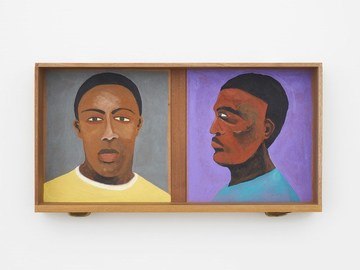
For this exhibition, Lubaina Himid has also turned her hand to curating. Known mostly for her figurative paintings, the artist has described this four-artist show as “a unique opportunity to perform some subtle creative conjuring tricks.” Its subject is the city of Manchester, and it focuses on the geological, historical and political issues that exist beneath the city’s surface. Himid’s contribution – which is itself a reflection on homelessness in Manchester – is a installation of found objects, painted to imbue them with a sense of strangeness and magic.
Open 6 October – 7 January
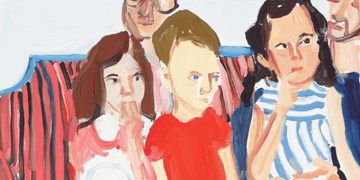
I am always a fan of expansive exhibitions built around simple themes, and very much look forward to exploring more than 120 artworks that deal with the simple but inevitably thorny idea of family. This show features portraits that capture the joys, tensions and complexities of traditional family life, conceptual works that question the idea of the nuclear family and much in between.
Open 5 October – 17 December
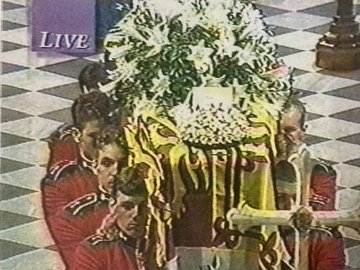
Lutz Bacher is an artist who shows me how big the world is; just how much information, misinformation, important art and mindless content is out there. In her work, one thing turns into another and then another in an unpredictable but just-cohesive (until it isn’t) constellation of deeply personal and mass-market images, videos and sounds. This exhibition purports to bring together the “flotsam from the information age” in the shape of a series of films and installations that weave the artist’s own identity (in real and assumed forms) together with imagery including the funeral of Princess Diana, a pit of sand, giant sound baffles and a machine that plays the keys of an electric organ.
Open 28 September – 14 January
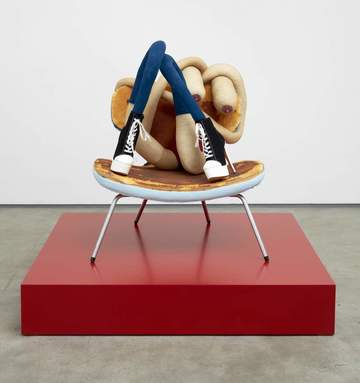
Where is the line between domestic and public; the personal and the political? Since her emergence as part of the YBA movement in the 1990s, Sarah Lucas has been attacking the idea that there is a real distinction between the two. This exhibition will continue that line of thinking, featuring sculptural works displayed on chairs, photography as wallpaper and large concrete casts placed on the Tate’s lawn. A survey of the last four decades of Lucas’ practice, this show was devised in close dialogue with the artist and will present her deeply political practice in her own voice.
Open 5 October – 18 November
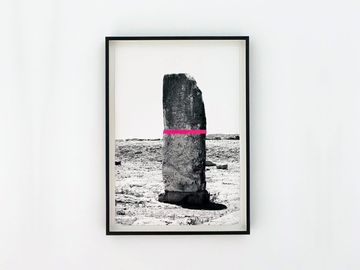
This exhibition features work made by British artist Amy Stephens during a residency in Cyprus last year. At its centre is an interest in the transformation of natural forms into sculptural artworks, the work often juxtaposing the untouched products of natural processes, such as monolithic-looking rocks, with brightly coloured (and clearly human-made) objects and marks. The show will coincide with a presentation of Stephens’ work as part of Frieze Sculpture in Regent’s Park.
Open 30 September – 14 January
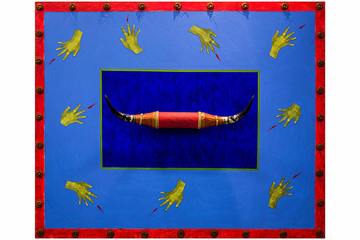
Born on the Caribbean coast of Colombia, Ofelia Rodríguez spent time living, studying and working in New Haven, Paris and London before her death earlier this year. Against this international background, her country of birth remained an impossible-to-resist influence, the artist once claiming ‘there is that sense of unreality… a feeling of being on the edge of the world, at its margin… a feeling of floating, of being suspended in mid-air – a dreamlike state – which is inevitably in my work.’ This exhibition brings together the work of five decades of the artist’s practice of painting and assembling objects to create compositions that blend the popular, the mystical and the vernacular.
Open until 7 January

I first encountered Jonathan Baldock’s sprawling sculpture Flower Mother, an anthropomorphised sunflower whose wide eyed, pink-and-green face is supported by a network of talon-like grey roots, as part of his solo exhibition at Stephen Friedman last year. In Charleston’s new space in Lewes, East Sussex, this textile sculpture is the centre of a solo exhibition featuring fabric, paint and ceramics, all of which borrow motifs from folklore and the plant kingdom to explore our bodies and their relationships with the space that they inhabit.
Open until 5 November

Located in the same county as, and sharing a slightly mediaeval aesthetic with, Baldock’s show is a presentation of work by Bristol-based artist Martyn Cross at Flatland Projects in Bexhill on Sea. His paintings, often displayed on large un-stretched canvases, are visibly overworked, scratched-into and layered. They feel like relics from an unknown time and place, unearthed – rather than created – by the artist. However, when studied in view of the exhibition’s title, though, the works on show begin to feel closer to home, the universal motifs he employs coalescing to form a portrait (by any other name) of the artist himself.



